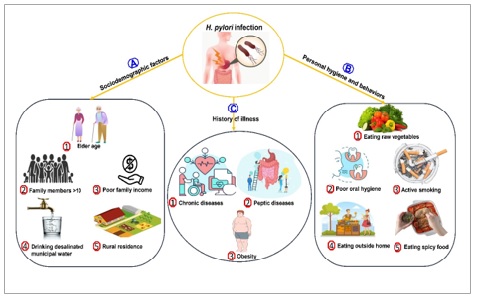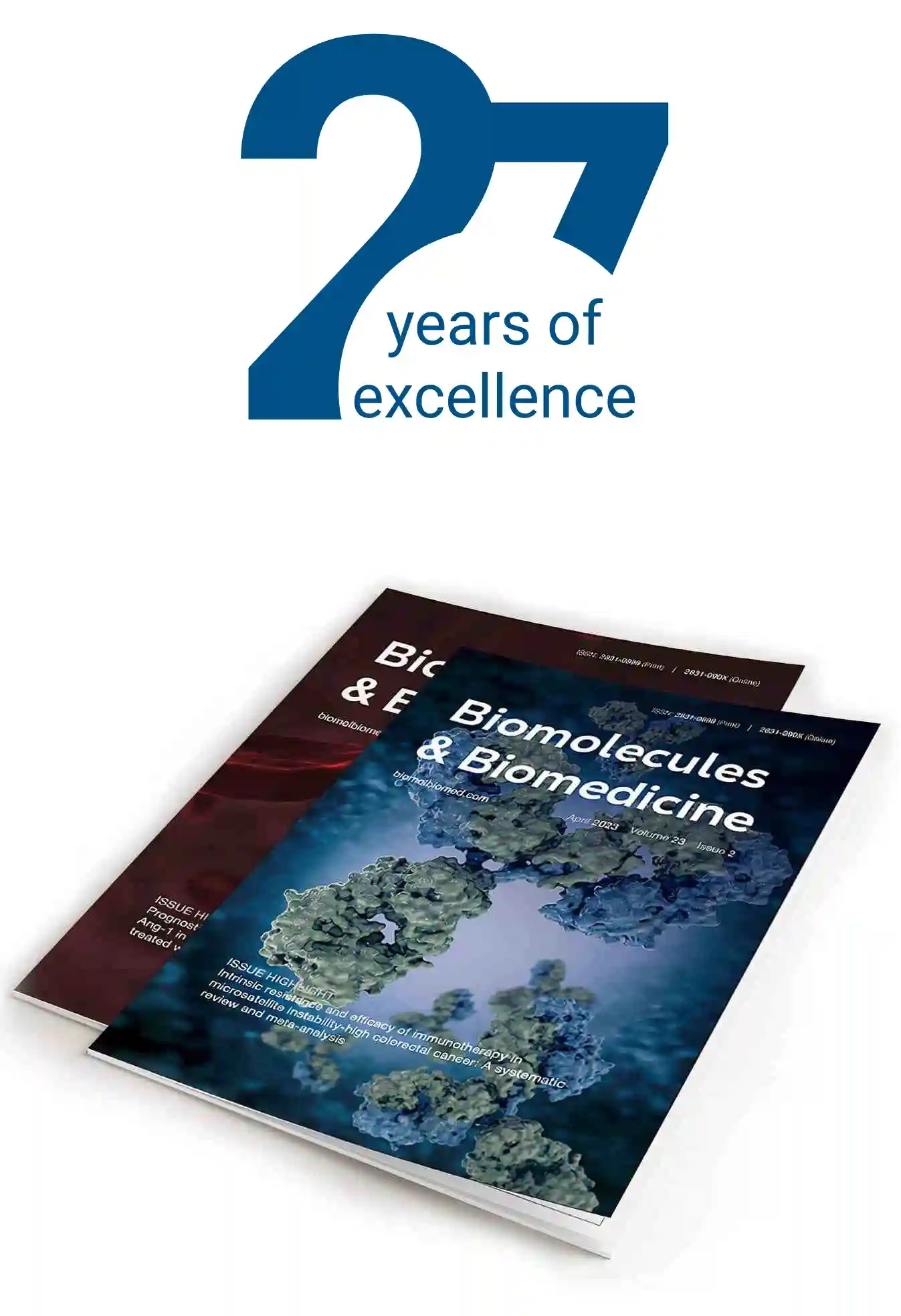Epidemiology, pathogenicity, risk factors, and management of Helicobacter pylori infection in Saudi Arabia
DOI:
https://doi.org/10.17305/bb.2023.9575Keywords:
Helicobacter pylori, prevalence, pathogenicity, gastric cancer, risk factors, management, Saudi ArabiaAbstract
Helicobacter pylori (H. pylori) is a gastric microbial pathogen that infects approximately half of the global population. This bacterium significantly contributes to various gastroduodenal diseases, including chronic active gastritis, peptic ulcerations, and malignant transformations. This review focuses on epidemiology, pathogenicity, virulence genes, risk factors, and management of H. pylori infection, specifically within the context of Saudi Arabia. The results presented here are grounded in studies conducted in Saudi Arabia, contrasting with mere bibliographic reviews of findings from other countries. H. pylori infection has been observed in Saudi Arabia, with substantial differences in the prevalence, ranging between 10-96% among various studied populations. Several risk factors for H. pylori infection have been identified, encompassing socioeconomic status, medical history, personal hygiene, and behavioral practices. Among the virulence genes harbored by H. pylori, cytotoxin-associated gene A (cagA) and vacuolating cytotoxin (vacA) are most common, with their presence correlating with the pathogenicity and clinical manifestations of the associated diseases. A range of invasive and non-invasive diagnostic assays have been utilized to identify H. pylori infection, with their employment being influenced by factors like availability, cost, patient age, gastric symptoms, and the specifics of clinical information sought. While detection methods like the H. pylori stool antigen test and the urea breath test offer more accuracy and speed, culturing remains indispensable for determining the antimicrobial susceptibility profile. The emergence of resistant strains across varying regional settings poses a significant challenge to treatment endeavors, necessitating an assessment of local antimicrobial resistance rates prior to formulating treatment strategies. The findings of this review highlight the importance of continuous implementation of screening, control, and prevention of H. pylori infection to combat the spreading infection and other related complications.
Citations
Downloads

Downloads
Published
Issue
Section
Categories
License
Copyright (c) 2023 Mutasim E. Ibrahim

This work is licensed under a Creative Commons Attribution 4.0 International License.
How to Cite
Accepted 2023-09-22
Published 2024-05-02









